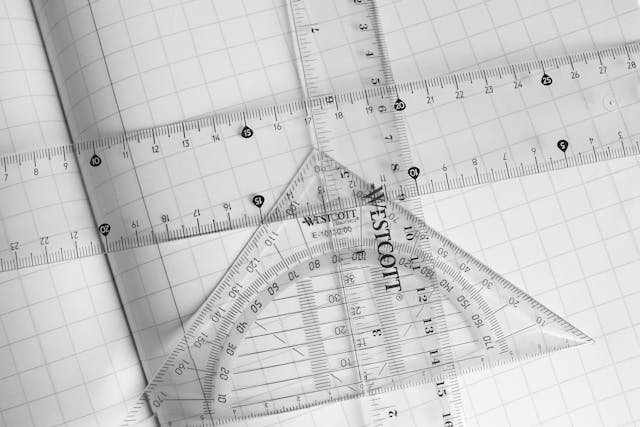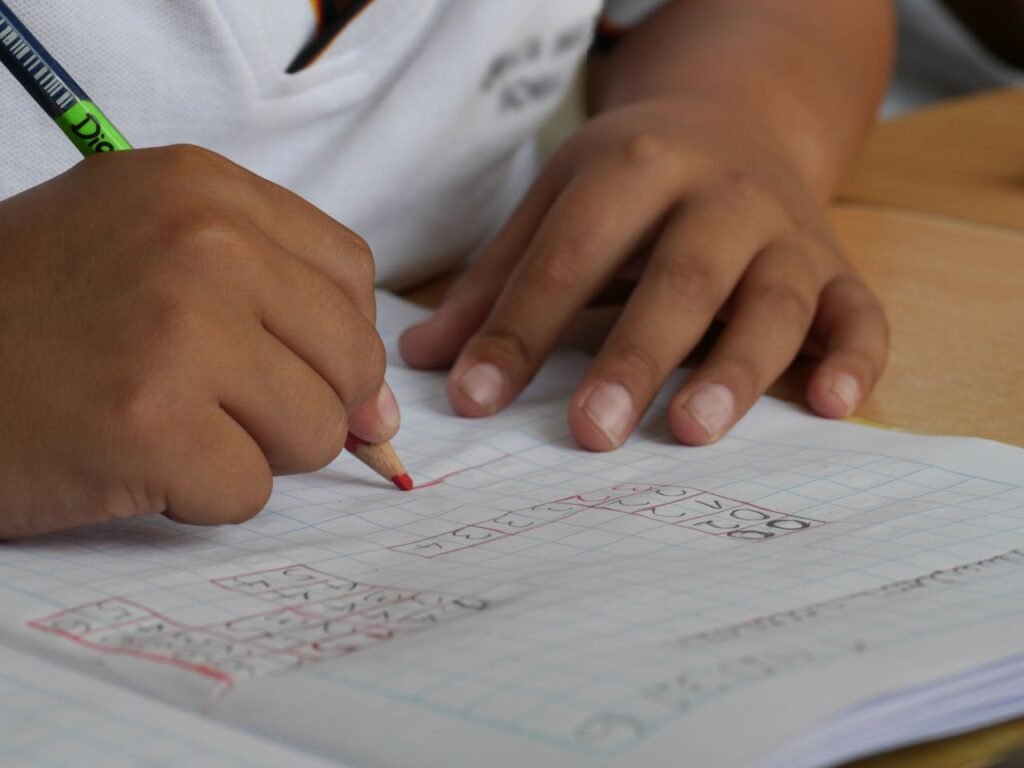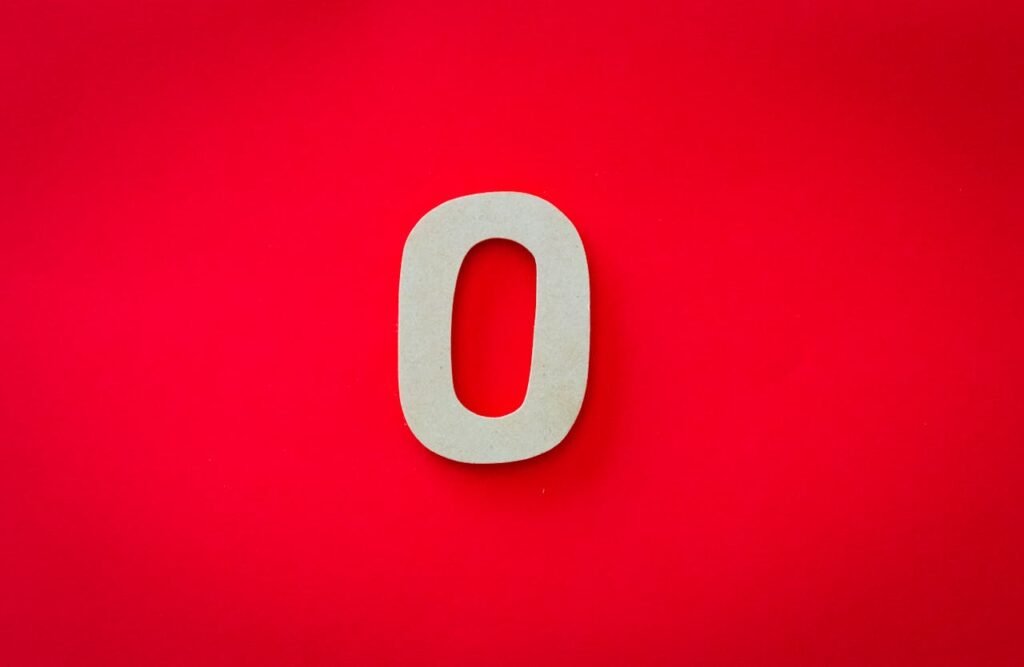Geometry is everywhere. It’s in the buildings we walk past, the food we eat, and even in the toys we play with. But for many kids, learning geometry feels hard. All those shapes, angles, and strange words can be confusing.
At Debsie, we know the best way to teach geometry isn’t with long lectures or worksheets. It’s with hands-on fun. When kids build, touch, and move things around, they start to see patterns. They stop guessing and start understanding. And once they understand, they feel smart—and excited to learn more.
In this guide, you’ll find simple, smart geometry activities you can do at home or in the classroom. They’re designed for kids aged 7 to 14. No fancy tools needed. Just a little time, a bit of space, and a child who’s ready to explore.
Activity 1: Build Shapes With Everyday Objects
Let’s start with something very simple—building shapes using things you already have at home. This can be straws, sticks, toothpicks, paperclips, or even pencils.
Tell your child:
“We’re going to build shapes, not just draw them!”
Start with basic shapes like triangles, squares, and rectangles. Ask your child to connect toothpicks or straws using small balls of clay or soft erasers at the corners. Each stick is a side, and each clay ball is a corner (or “vertex,” but you don’t need to use that word yet).
As they build, ask:
- “How many sides does this shape have?”
- “Are all the sides the same?”
- “What do you notice about the corners?”
Then, level up. Try making a pentagon (5 sides), hexagon (6 sides), or even an octagon (8 sides). Let them try different shapes and even create their own! This activity helps them understand 2D geometry by seeing and touching the sides and corners themselves.
Activity 2: Trace Shadows of Shapes Outside

Take learning outside. Wait for a sunny day, grab a few small solid objects (like blocks, balls, or toy animals), and place them in the sun. Then ask your child to trace their shadows using chalk or paper.
Now ask:
- “What shape do you see?”
- “Is this a straight shape or round?”
- “What happens when we turn the object or move it?”
This simple activity teaches children how light and position change shapes. It also helps them understand shapes in a real-world way, not just on paper. You can even challenge them to find different shadows during the day—morning, noon, and afternoon—and compare how the shapes stretch and change.
Activity 3: Make 3D Shapes From Paper
Most kids are taught about cubes, cones, and pyramids through pictures. But when they build them, the shapes start to make sense.
Give your child paper or cardstock and help them fold and tape basic 3D shapes:
- A cube (6 equal squares)
- A pyramid (a square base with 4 triangle sides)
- A cylinder (two circles with a rectangle wrapped around)
Once built, talk about:
- “How many flat faces does it have?”
- “Are the sides all the same?”
- “Does it roll or stack?”
Let them decorate the shapes, turn them into mini buildings or robots—whatever keeps it fun. The goal is to touch and feel the geometry, not just memorize it.
Activity 4: Shape Hunt Around the House
Sometimes, the best learning comes from just noticing what’s around you. Geometry is hidden in your home, your school, your kitchen—even in your clothes!
Tell your child:
“We’re going on a shape hunt!”
Give them a small notebook or paper and ask them to walk around and look for shapes. Start with the basics:
- Circle (plate, clock, bowl)
- Square (tiles, napkins, sticky notes)
- Rectangle (doors, books, phone screens)
- Triangle (pizza slice, hanger, corner of a box)
You can make it more fun by saying:
- “Find five rectangles in the living room.”
- “Can you spot a triangle that’s part of something else?”
Let them draw or write what they find. Talk about the shape names and how many sides each one has. It’s simple, but it helps kids understand that geometry isn’t just in books—it’s in life.
Activity 5: Tangram Puzzle Play
A tangram is a puzzle made from seven flat shapes (usually triangles, a square, and a parallelogram). These pieces can be put together to form animals, people, or objects.
You can buy a tangram puzzle or make one by cutting colored paper. Give your child a silhouette of an object—like a cat or boat—and ask them to make that shape using all seven pieces.
This activity is excellent for:
- Understanding how shapes can be combined
- Recognizing symmetry and rotation
- Thinking creatively while using basic geometric rules
And most of all, kids love solving puzzles. It feels like play, but it’s deep learning in disguise.
Activity 6: Create a Symmetry Mirror
Symmetry can be tricky until kids actually see it.
Fold a piece of paper in half. On one side, draw half of a simple shape—like half a heart, star, or butterfly. Now unfold it and ask:
“What do you think the full shape looks like?”
Then have your child draw the other half. You can also use a small mirror placed along the fold to show what symmetry looks like instantly.
Let them try symmetrical drawings, paint one half of a shape and fold the paper to press it together. When they open it—magic! They’ll see how both sides match.
It’s one of the easiest ways to explain symmetry in a fun, hands-on way.
Activity 7: Design a City With Shapes
Give your child paper, colored pencils, and imagination. Ask them to draw a city using only shapes.
They might draw:
- Squares for houses
- Rectangles for tall buildings
- Triangles for rooftops
- Circles for wheels, clocks, or trees
- Half-circles for bridges or tunnels
Encourage them to name the shapes they use as they go. Ask questions like:
- “What shape is your building made of?”
- “Can you add a triangle on top of the square to make a roof?”
This kind of creative drawing helps kids connect shapes to real-world objects, while also practicing how to combine shapes to make more complex forms.
When they’re done, they’ll have a full city made of geometry—and they won’t even feel like they were doing math!
Activity 8: Measuring Angles With a Protractor (Made Fun)
For older kids (around 10+), you can introduce angles. But instead of just measuring lines, turn it into a game.
Start by helping them make a paper protractor or use a real one. Then draw different angle lines on paper or tape them onto the floor using painter’s tape.
Challenge your child to:
- Find right angles in the room (like the corners of books or windows)
- Spot acute angles (less than 90°) and obtuse angles (more than 90°)
- Create a picture or robot using only angles, then measure them
You can even pretend you’re “angle detectives” looking for hidden angles in everyday objects.
This turns measuring into a mission, not a task. And when they use a tool themselves, it gives them ownership of the learning.
Activity 9: Make Pattern Art With Geometry
Geometry isn’t just math—it’s art too.
Introduce your child to the idea of patterns and repetition. Show how certain shapes fit together over and over to make designs.
Give them tools like:
- Rulers
- Dot grids
- Colored pencils
And ask them to create:
- A tiled floor design
- A repeating border for a drawing
- A geometric animal made of triangles and circles
This helps with spatial awareness, shape recognition, and creativity. Plus, they get to be artists—and that’s always a win.
And here’s the secret: when kids use geometry to create something they love, they start to see math as a tool, not a chore.
Activity 10: Geometry With Food
Yes, you can turn snack time into math time—and kids love it.
Start with simple foods like:
- Pizza (circle divided into triangles)
- Sandwiches (cut into triangles or rectangles)
- Crackers (squares, rectangles, hexagons)
- Fruit slices (semi-circles, cylinders like bananas)
Ask your child to name the shapes before they eat. You can say:
“How many triangles are in your sandwich?”
“What shape is this cookie?”
“Can we split this orange into equal parts?”
You can even create a little “shape plate” where they have to arrange different shapes before they eat. This makes geometry feel real and useful. Plus, the reward is a tasty treat!
Activity 11: Geometry Scavenger Hunt
This activity works indoors or outside. Create a simple checklist of shapes—triangles, circles, squares, rectangles, ovals—and challenge your child to find one of each.
You can make it as easy or hard as you want. For older kids, include:
- Parallelogram
- Rhombus
- Trapezoid
Ask your child to take photos or draw the items they find. You can even ask them to sort by “2D” and “3D” shapes afterward. This encourages critical thinking and classification.
And it turns a regular walk into an exciting learning adventure.
Activity 12: Build a Shape Zoo
Ask your child to invent animals using only geometric shapes. For example:
- A circle for a cat’s face
- Triangles for ears
- Squares for legs
- Rectangles for the body
They can draw the animals or build them using cut-out paper or felt. Each animal should be made of clear, named shapes.
Once they’ve made a few, invite them to present their “Shape Zoo.” You can ask:
“What shapes did you use for this animal?”
“Which animal has more triangles?”
“Can you make a new animal using only circles?”
This blends creativity with math and helps with recognition, comparison, and storytelling.
Activity 13: Origami and Folding Geometry
Origami isn’t just fun—it’s full of geometry.
Give your child a square piece of paper and teach them how to fold simple shapes like:
- A triangle (just one fold in half)
- A rectangle or diamond
- A simple origami dog, fish, or boat
As they fold, talk about:
- What new shapes they see
- How the lines change
- How folding makes symmetry
Each fold teaches something about angles, sides, and balance. And when a flat square becomes something new, it feels like magic. Kids love it—and they learn without even realizing.
Activity 14: Geometry Story Time
You can end a day of shape-filled fun with a story—written by your child.
Ask them to make up a story using shapes as characters. Maybe Mr. Triangle is trying to build a house with his friends Square and Circle. Maybe a big cube rolls into town and everyone thinks it’s a monster.
Let them draw it, act it out, or tell it aloud. This gives kids a chance to:
- Review what they’ve learned
- Use their imagination
- Make geometry feel personal and alive
When kids can talk about what they learn, they truly understand it.
Why Geometry Is a Life Skill—Not Just a Math Topic
For many people, geometry is just one of those topics you “get through” in school. Triangles, circles, formulas, and shapes on paper. But at Debsie, we see geometry differently. It’s not just about math. It’s about how kids see, think, and move through the world.
When taught the right way—with play, hands-on discovery, and real-life connections—geometry becomes one of the most powerful tools for a child’s growth.
Here’s why:
🧠 Geometry Builds Visual and Spatial Intelligence
Every time your child builds a shape, folds paper, or fits a puzzle together, they’re training their brain to see how things fit and move in space. This skill—called spatial reasoning—is key not just for math, but also for science, sports, architecture, art, and even video game design.
At Debsie, we help children build their inner “math eyes”—a way of seeing the world in lines, forms, and movement. And once they see it, they can’t unsee it.
💡 Geometry Sharpens Real-World Problem Solving
Understanding shapes and space helps kids make sense of everyday challenges. From figuring out how to pack a bag, to folding a blanket, to designing a mini-garden—geometry is everywhere.
When your child can break down a problem into parts, notice patterns, and think through different possibilities, they’re not just doing schoolwork. They’re learning how to think smart, plan better, and solve problems with calm and creativity.
🎨 Geometry Connects Logic and Creativity
Most subjects are either logic-based or creativity-based. Geometry is both. When a child designs a pattern, creates symmetry in art, or invents their own shape creature, they’re using logic to build beauty—and creativity to explore structure.
That’s why Debsie’s geometry classes don’t just focus on answers. We encourage building, drawing, experimenting, and reimagining. Because math isn’t just about being “right.” It’s about wondering, trying, and discovering.
🏗️ Geometry Gives Kids Real Confidence
Many kids feel nervous about math. But geometry gives them a way in. It’s visual. It’s hands-on. It’s see it, build it, understand it.
When a child folds a perfect paper cube or spots a hexagon on the street, they light up. “I know what that is!” That moment of confidence grows into something bigger—a belief that they can learn anything if it’s explained the right way.
And at Debsie, that’s what we do. We explain things with heart, with care, and in a way that sticks.
🌱 Geometry Prepares Kids for the Future
Tomorrow’s world needs thinkers, builders, creators, and planners. Geometry builds all those skills. It lays the foundation for fields like:
- Architecture
- Engineering
- Robotics
- Graphic design
- Game development
- Medicine
- Environmental science
And even if your child doesn’t choose those paths, geometry teaches them to be more observant, thoughtful, and curious—qualities that last a lifetime.
How Debsie Helps Kids Master Geometry (and Have Fun Doing It)
At Debsie, we believe geometry should never feel scary or boring. Shapes, space, patterns—they’re part of everything kids see and do. That’s why we teach geometry in a way that feels real, exciting, and hands-on from the very first class.
Our mission is simple: help every child understand geometry not just with their head, but with their hands, eyes, and imagination.
Here’s how we make that happen:
🧑🏫 Live Classes With Teachers Who Really Get Kids
We’ve carefully chosen teachers who don’t just know math—they love teaching it to kids. These are educators who take time to explain each idea in ways that are clear, kind, and easy to understand.
In every Debsie class, your child learns in real-time with a live teacher—not a video. That means they can ask questions, speak up when they’re unsure, and get help right away. It’s like having a patient tutor who knows exactly how to turn a confusing concept into a fun, simple idea.
✋ Hands-On, Minds-On Geometry
Kids at Debsie don’t just hear about geometry—they build it, draw it, fold it, and explore it. Every lesson includes interactive, hands-on activities that bring shapes to life.
We use fun challenges like:
- Building shapes from household items
- Drawing cities made entirely of triangles and squares
- Creating origami models to explore symmetry and angles
- Designing real-life patterns to understand repetition and tiling
By using their hands and their minds, kids begin to feel how geometry works—and that leads to deep, lasting learning.
🎮 Gamified Learning That Keeps Kids Excited
At Debsie, learning is always playful. Our platform includes game-like rewards, points, and mini achievements that keep kids engaged and motivated.
Instead of feeling pressure, kids feel progress. They want to try more, build more, and understand more—because every small win is celebrated.
And when kids are smiling and having fun, they forget they’re even “doing math.” That’s the magic of how we teach.
📈 A Personal Path for Every Learner
Every child is different. Some kids race ahead, others need more time. Some love art, others prefer building things. At Debsie, we tailor each child’s learning experience to their pace, style, and interests.
Our platform adjusts the difficulty as they grow. Whether your child is 7 and just starting with basic shapes or 14 and diving into angles, 3D objects, and problem-solving—we meet them where they are and help them move forward confidently.
No one is left behind. Everyone moves forward—step by step, with joy.
💬 Support for Parents, Too
We know you care about your child’s progress, but you’re busy—and that’s okay. Debsie sends you regular updates and easy-to-read progress reports, so you always know what your child is learning and how they’re doing.
We even give you simple suggestions for how to support learning at home—no pressure, just practical tips that make a difference.
🌍 A Safe, Global Classroom
Debsie is a trusted learning space for families in over nine countries. That means your child gets to learn with other bright, curious kids from around the world—all in a safe, secure, and friendly environment designed just for them.
They learn new ideas, meet new friends, and feel part of a big learning adventure.
Final Thoughts: Making Geometry Real, Fun, and Lifelong
Geometry isn’t just something kids learn for a test. It’s something they see, touch, and use every single day. From building with blocks to folding paper to finding shapes on their plate—math is everywhere.
At Debsie, we believe that hands-on learning is the best kind of learning. That’s why our teachers use activities like these to bring geometry to life—step by step, with care, laughter, and creativity.
We don’t just teach kids shapes. We teach them how to think, observe, and explore—so they can see the world in a whole new way.
🎓 Want to help your child fall in love with math and problem-solving?
🎉 Book a free class at Debsie today and see what hands-on learning really looks like.
Together, we’ll help your child grow smarter, more curious, and ready for anything—one shape at a time.
Read Next:



